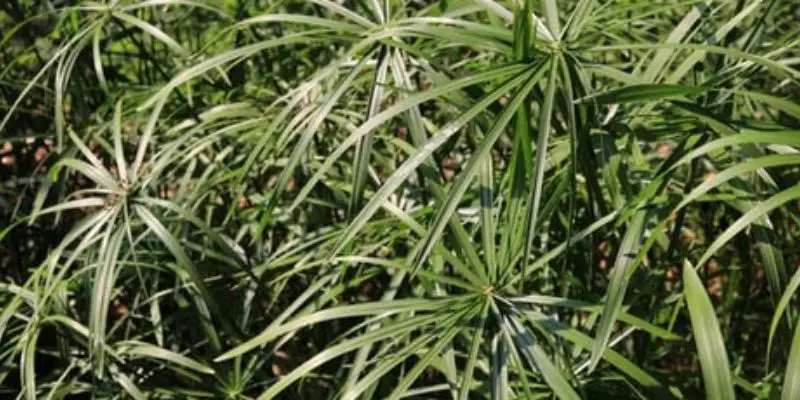With its expansive, palm-like leaves, the umbrella plant makes a unique houseplant specimen. But left unpruned, leggy growth and sparse lower foliage can detract from its appeal. Through proper pruning techniques, umbrella plants can achieve their natural bushy potential to showcase those iconic rounded leaves. In this guide, we’ll show you how to prune umbrella plant like an expert.
An Introduction to Pruning Umbrella Plants
While pruning is not essential for umbrella plant health, it offers several benefits:
- Encourages bushier, more compact plants by promoting branching
- Retains lower leaves by allowing light penetration
- Removes unsightly yellow or damaged foliage
- Shapes the plant to match its space by controlling size
- Rejuvenates old plants through hard cutting back
- Keeps growth even and visually full especially in containers
- Redirects growth outward for better structure
With occasional judicious pruning, umbrella plants grow into beautifully shaped specimens with dense, lush foliage.
When to Prune Umbrella Houseplants
Time pruning to avoid interfering with growth:
- Prune actively growing umbrella plants in early to mid spring.
- Prune dormant plants in late winter just before seasonal growth resumes.
- Limit pruning in fall to avoid cold sensitivity.
- Avoid pruning for 1-2 months after repotting or dividing umbrella plants.
Prune umbrella plants before and during periods of peak growth to direct new foliage.
Tools Needed for Pruning Umbrella Plants
Having the proper tools makes pruning easier and improves results:
- Bypass hand pruners for precision pruning of small stems
- Gardening shears for quickly trimming new shoots
- Curved pruning saw to remove thicker wood
- Sterilizing spray or wipes to prevent bacterial spread
- Stepladder for safely reaching tall upper leaves
- Potting mix and pots to optionally root cuttings
Quality tools allow pruning umbrella plants without harming their growth habits.
How to Prune Umbrella Plant Houseplant
Follow these steps when trimming your umbrella plant:
- Sterilize pruning tools with disinfectant spray or wipes to prevent disease spread.
- Remove any dead, damaged, diseased or yellowing leaves and stems back to healthy tissue.
- If needed, cut back leggy stems above an outward facing node to redirect growth.
- Thin congested foliage to allow more light penetration to lower leaves.
- Remove leaves partially enveloping each other to prevent moisture traps.
- Continually clean tools during use on each plant.
With the proper technique and timing, umbrella plants tolerate pruning well.
Pruning Umbrella Plants for Shaping
In addition to removing damaged foliage, pruning also shapes umbrella plants:
- Prune plants to maintain a round uniform shape. Remove errant outer stems.
- Cut back new shoots extending above the plant’s canopy to encourage fullness.
- Remove lower leaves gradually over time to expose the stem as the plant ages.
- For potted plants, prune roots annually to maintain size and vigor.
Thoughtful shaping pruning enhances umbrella plants’ unique forms.
Cutting Back Leggy Umbrella Plant Stems
Lanky, leggy umbrella plant stems often stretch toward light sources and produce few leaves. Rejuvenate by:
- Identify overly long stems lacking leaves. Look for extended gaps between leaves.
- Use sterile pruners to cut back each leggy stem by at least half. Make each cut just above a node.
- If extremely leggy, simply remove the entire stem back to its base.
- New shoots soon emerge from nodes below pruning cuts to replace the lanky growth.
Cutting back leggy stems forces lower buds to generate fresh foliage.
Pruning Root Bound Umbrella Plants
Umbrella plants kept too long in small containers become pot bound. Prune roots:
- Remove the plant from its pot and gently loosen the root ball with your hands.
- Using sterile shears, trim back circling, tangled white roots up to 2 inches from the base.
- Replant in fresh potting mix in the next larger pot size.
- Water well and fertilize to stimulate new root growth after pruning.
Conservatively root pruning revitalizes pot bound umbrella plants.
Rejuvenating Old, Overgrown Umbrella Plants
Very overgrown umbrella plants with sparse lower leaves recover well from hard pruning:
- Prune away all dead wood and leaves to allow better assessment.
- Cut back each remaining stem down to 6 to 8 inches above the soil.
- Provide bright indirect light and consistent moisture for recovery.
- As new shoots emerge, continue directing their shape with tip pruning.
Even very neglected umbrella plants regain their beauty through drastic pruning followed by careful regrowth guidance. The pruning inspires fresh new foliage.
Avoiding Common Umbrella Plant Pruning Mistakes
When trimming umbrella plants, be sure to avoid:
- Excessive pruning leaving few remaining leaves. Gradually remove older leaves.
- Cutting away green healthy leaves. Yellow or browning leaves should be pruned.
- Topping plants or shearing into tight balls. This ruins their natural shape.
- Pruning in fall before dormancy which can cause cold damage.
- Failure to sterilize tools which spreads infectious diseases between cuts.
With the proper technique and care, umbrella plants tolerate pruning well and flourish under your care.
Conclusion
While umbrella plants grow readily with little maintenance, occasional judicious pruning encourages them to reach their full potential. Thus, it is important to learn how to prune umbrella plant. By pinching back leggy stems, thinning congested foliage, and removing damaged leaves, umbrella plants remain bushy and compact. Rejuvenate old plants through hard pruning to inspire fresh new growth. With some simple pruning skills, umbrella plants continue growing vigorously to showcase their uniquely rounded foliage.

Michael Glenn is a certified arborist and horticultural expert with over 15 years of experience in the landscape industry. His passion for plants and trees has led him to become a sought-after authority on pruning and trimming techniques. Glenn’s in-depth knowledge of proper pruning methods, timing, and tools has helped countless homeowners and professionals maintain healthy, aesthetically pleasing gardens and landscapes.
In addition to sharing his pruning expertise through practical tips, step-by-step guides, and expert advice, Glenn is also a respected author of pruning tool buying guides. His comprehensive reviews and comparisons ensure readers can make informed decisions when investing in quality loppers, pruning shears, saws, and other essential equipment. With a deep understanding of plant biology and sustainable practices, Glenn’s writing empowers audiences with the knowledge needed to properly care for green spaces.





